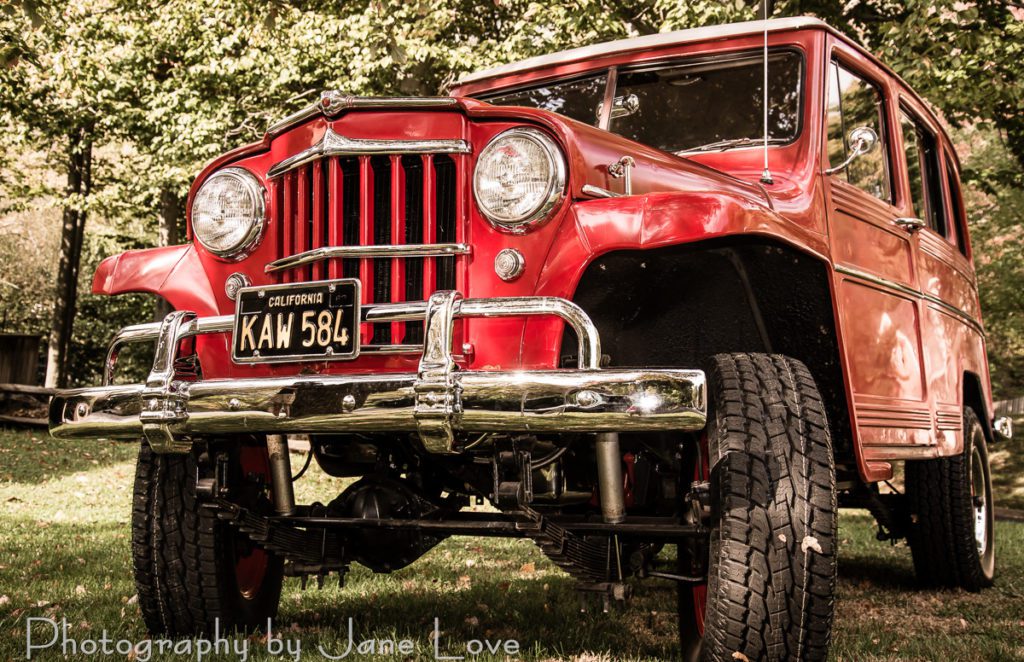Contents
My Experience

When I’m out and about with my 1960 Willys Utility Wagon, it is not unusual for people to ask “What is that?” or make the comment “I’ve never seen one of those.” I then ask myself “Why don’t people know about Willys Utility Wagons?” If I were driving a 1969 Camaro most people would identify it as a Chevrolet, or at least recognize it as a ‘60s muscle car. So, what is the issue with Willys wagons?
Uniqueness
The Willys Utility Wagon’s versatility and capability were unique for that era. I’m not aware of any other US auto manufacturer that produced a four-wheel drive, off-road vehicle, with room for up to seven passengers. Wikipedia states that the Willys wagon “[is] the ancestor of all sport utility vehicles.” If so, why isn’t everyone scrambling to own a piece of automotive history?
Rarity
The Oxford Dictionary refines rare (of a thing) as “not found in large numbers and consequently of interest or value.” Unfortunately, the subjectivity of “large” creates a problem because everyone has their own perception of large. The conclusion presented by the Oxford definition, “and consequently of interest or value,” is troubling because a Willys wagon being of interest or value is sadly contrary to my experience.
Collectibility
Returning to the Oxford Dictionary I find collectible (noun) defined as “an item valued and sought by collectors.” Interestingly, the definition does not mention rare, only that it be valued by collectors. However, the definition of “rare” does mention that a consequence of being rare is that [it becomes] of interest or value. It appears we just ran in a circle and “not being found in large numbers” is indeed a factor.
Another Look at Rarity

The Willys Utility Wagon, model 54168 (6-226 4X4 SW), was produced between 1955 and 1961. Table 1 lists the annual production according to this source.
With 61,238 vehicles produced over seven years, that is an average of fewer than 8800 vehicles per year. Let’s see how that compares with a 1969 Camaro.
In 1969, Chevrolet produced a total of 243,085 Camaros. That’s more than four time the 61,238 total seven-year production of Willys Utility Wagons. Sure, you can argue the numbers are smaller when looking at the various Camaro option configurations, but it still hard to ignore the magnitudes of difference in production numbers. To me, it looks like the Willys Utility Wagon is rare compared with a 1969 Camaro.
Let’s take a look at what was going on during 1955 to 1961 with other vehicles. Because it is unique, there are no direct comparisons to be made to the Willys wagon. Willys produced pickup trucks in similar number to the Utility Wagons so that would have competed with Dodge, Ford and Chevrolet pickups. The multiple (more than four) passenger vehicles would have been station wagons but they were two-wheel drive. Taking a quick sample of the Big Three’s production numbers I think it’s fair to say that there were 10 to 20 times more Dodges, Fords and Chevrolets produced during the years 1955 through 1961.
Simply Unremarkable
There is one last term in this article’s title to consider – “simply unremarkable.” Unremarkable means unlikely to be noticed, but as I mentioned, almost every time I’m out with my Willys it is the center of attention. That tells me that it is far from unremarkable, it is an overwhelming crowd pleaser!
So what is going on? It appears that the Willys wagon is unique (one of a kind) rare (compared with other manufacture production numbers) and remarkable (always gets noticed), but yet its collectibility is low (has little value to collectors). That 1969 Camaro is not unique or rare by the definitions presented here, but it is remarkable and highly collectible. How can a Camaro achieve such high collectibility status without also being unique and rare?
Brand Recognition
I believe Willys Utility Wagons, and Willys in general, suffer from a lack of name, or brand, recognition. If I had a 1960 Chevrolet pickup, people may say they have never seen one but they will recognize the “Chevrolet” name. Willys, as a brand, disappeared more than 50 years ago – no wonder the public doesn’t recognize it.
It is my opinion that the collectibility, and subsequent value, of Willys Utility Wagons would be higher with greater brand recognition. How is that to be accomplished?

